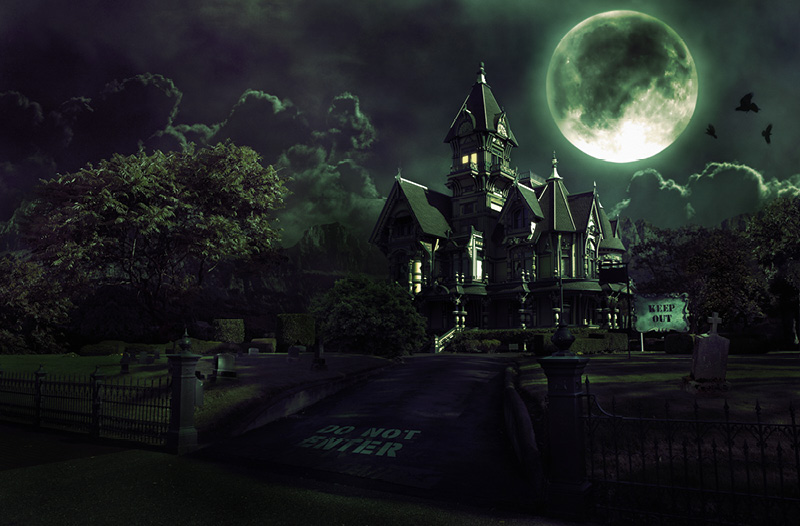“Do you trust me?” Bill Adler asked my wife.
It was a strange question, Lisa thought. The two had just floated over the New Mexican desert that October morning, riding the wind with hundreds of huge hot air balloons, gliding back and forth in an aerial ballet known as the Albuquerque Box. But now she and Bill, her pilot, were caught in crosswinds, hurtling into the central city where busy highways intersected and high-tension power lines waited to greet them. Did she trust Bill? Did she have a choice?
Lisa nodded. Bill cut the flame over their heads. There were seconds of eerie silence, and then they started to plunge. As the top of the balloon cleared the power line by inches, he hit the igniter and the stainless steel burner roared to life again, fighting for altitude.
Their wicker basket skidded along the sides of a construction ditch, nearly knocking the hard hats off the road crew. As they rose above one of the few open fields left in Albuquerque, Bill yanked the red line that opened the top of the balloon to let the air out and collapse it.
But the wind had other plans. It grabbed the balloon, turned it into a sail and pushed it into an eight-foot high chain-link fence. The basket hit with such force that Lisa’s sunglasses flew off. She heard a monstrous ripping sound as the balloon shredded itself on the barbed wire atop the fence.
But they were safe. And any landing you can walk away from is a good one.
Welcome to the world of the last American cowboys. They ride the wind, make many of their own rules and resist insurers’ attempts to regulate them.
The Super Bowl of Ballooning
The Albuquerque International Balloon Fiesta, held each October, is the Super Bowl of ballooning. All the great pilots—and all those who think they are great pilots—dream of being there. At the 2000 Balloon Fiesta, more than 1,000 balloons launched at once, filling the skies and setting a record that may never be equaled.
Albuquerque is also home to America’s first family of ballooning, the Abruzzos. And last year, the city became a battleground pitting balloonists against the largest insurer in this small corner of the aviation world. At issue: How safe is it to ride the wind?
Rob Schantz knows both sides. His firm, The Schantz Agency, writes insurance through T.H.E. Insurance Company, an underwriter of specialty insurance to cover amusement park rides, race tracks and balloonists. He’s also a balloonist himself, as is his wife, who has broken many records.
“Ballooning is the least dangerous form of aviation there is,” argues Schantz, who backs up his talk with his rates. For example, he insures Bill Adler with a liability policy that provides $100,000 of coverage per passenger and $1 million per accident. Adler insures three hot air balloons—one so small that he rides on the fuel tank—for only $1,100, a rate that would inspire envy among car owners along the bumper-to-bumper East Coast. Adler has ripped up a few balloons, but he’s never had a serious accident.
While Adler’s rate is a bit low, his accident record is fairly typical, says Schantz, who runs his own agency in Jacksonville Beach, Fla.
“We generally get about 14 claims a year,” he says. “Somebody hits a house or destroys some crops. We haven’t increased our rates in two years.”
But he notes that balloonists still have to carry their own life insurance and, like race car drivers and mountain climbers, their rates are higher because ballooning is considered a special risk.
Schantz knows virtually every pilot he insures, and that’s not difficult, since the 3,000 to 4,000 balloon pilots make up only 2% of all U.S. pilots. And he thinks they get a bad rap.
“The bizarre thing is that there are very few accidents,” Schantz says, “but when they happen, you see them on Fox News every half hour.”
The statistics seem to bear out the balloonists. For the past 20 years, there have been 36 major ballooning accidents in the United States—resulting in 46 deaths—nearly all involving power lines. Aircraft fatalities from general and civil aviation totaled 547 in 2009 alone, according to the National Transportation Safety Board (NTSB). By comparison, nearly 34,000 people died on American highways in 2009, according to the Insurance Institute for Highway Safety.
Fire and Sparks Were Flying
Critics, however, argue that these figures are misleading, particularly if you were riding in a balloon that hit one of the dreaded power lines, as was Texas writer Marcie Cook.
“Fire and sparks were flying [in] every direction! My life almost ended there!” Cook writes on her website hotairballoonaccidents.com. She started the site to show how unsafe she thinks balloons are after she says she suffered a blackout and third-degree burns when the balloon she was riding in hit a power line.
Cook, who could not be reached for comment, argues that, because the universe of balloonists is so small and flights are usually only an hour, the ratio of accidents to flight time is as high or higher than your chances of being bumped (or bumped off) on the highway.
Balloonists are licensed by the Federal Aviation Administration (FAA), but there is no regulatory agency that requires each pilot—balloon or otherwise—to log every hour in flight. So no reliably accurate accident statistics exist.
How many balloonists actually fly, and when and where they go, is anyone’s guess. It’s difficult to determine the number of active pilots because licenses don’t expire and many pilots get certified for both ballooning and fixed-wing flight.
The NTSB claims on its website that it investigates all civilian crashes. But clearly plane and helicopter crashes, which make up about 96% of all accidents, get more attention. In fact, balloonists say that the FAA or NTSB does not always investigate crashes, even those resulting in fatalities. Keith Holloway, a spokesman for the NTSB, says the agency’s “threshold” for starting an investigation is “if there are fatalities or substantial damage.” Holloway says the NTSB might send an investigator to the scene or simply work with the FAA and local police to obtain the facts surrounding a crash.
Veteran balloon pilot Glen Moyer saw two close friends die in a power line accident. “After being questioned by the local police, I asked when someone from the FAA or NTSB would arrive,” Moyer says. “The police detective said simply, ‘They’ll just call up and get our reports.’”
Moyer was interviewed briefly by a regional FAA inspector the following day, but he says that neither he nor other witnesses were ever approached by the NTSB.
“The ballooning community should be self-policing,” complains Scott Appelman, owner of Rainbow Ryders, which operates a fleet of balloons that carry up to 12 passengers each at the Albuquerque Balloon Fiesta and other balloon events. “But insurance companies are the only ones setting standards.”
Mother Nature Is Mightier
The oldest balloon insurer, IMC Balloon Agency, did set standards at last year’s Albuquerque Balloon Fiesta—by raising rates. While organizers limited the number of balloons allowed each year, they couldn’t do anything about the city that was hemming them in: an expanding town on one side, a Native American reservation on the other, and the dreaded power lines, which crisscrossed the horizon like nets waiting for unwary fish.
At the world’s largest hot air balloon festival, 800,000 spectators come to watch the balloons launch at dawn and glow after dark. With such an audience, the pilots are anxious to get airborne—even under less than optimal conditions, such as when the wind is above 10 mph. Winds also play tricks, dying down and flaring up again as the sun rises or sets.
Appelman is still haunted by what happened in 2007, when the wind snapped a balloon’s tether line, flipping the basket and sending a 60-year-old California woman 50 feet to her death.
“It changed my life,” Appelman says. Now he takes no chances, even if it means losing a day’s flying and thousands of dollars. “You want to be up,” he says, “but Mother Nature is mightier than we are.”
The following year another pilot died when his balloon hit a power line. It broke his fuel line, ignited it, and sent the balloon down in a ball of flame. And in 2009, an elderly man was injured when the balloon he was riding in struck the top of a tent and he fell out.
IMC, with 30 years in the business, had had enough. As every agent knows, accidents are cyclical. But with such a small pool of insureds, the payouts at the Albuquerque Balloon Fiesta alone could easily overwhelm the premiums—the settlement for the California woman’s death was $1.4 million. So last year IMC charged its pilots who were going to Albuquerque an additional $256 “event attendance” fee.
“The sport of ballooning cannot withstand a continued high-risk exposure, producing carnage and death,” IMC President Beth Miller wrote in an email to balloonists.
Galleons in the Wind
Special fees aren’t uncommon. When balloonists go abroad, try to set a record, or fly a gas balloon—one filled with hydrogen or helium, which can remain in the air for days— insurers typically charge extra.
But this was different: To many pilots, this was like being forced to buy a ticket for a party in their own backyard. Most could afford the additional expense, having never filed a claim at Albuquerque or anywhere else. But when other insurers decided not to add the extra fee, many pilots moved to other carriers.
Balloonists are a breed apart. Like captains of old, they sail their galleons with the wind, dominating not the seas but the skies. They cherish the knowledge that they have to be good at what they do. Not doing everything well—and sometimes all at once—can bring sudden death. Their tightly knit fellowship dates back more than 200 years, long before nouveau aviators like the Wright Brothers finally put a motor on the bird’s wing.
“At a balloon meet, we all talk the same language,” Schantz says. “Everyone from Malcolm Forbes”—the late billionaire publisher was an avid balloonist—“to the janitor are all equal.”
Balloonists handle a 55-pound steel burner as though it were the steering wheel of a Honda Civic, shooting out 20-foot flames that will make the balloon, as tall as an apartment house, rise from the ground like a noisy miracle. Children peek inside it and ask for the “balloon cards” tucked in the pilot’s pockets. At county fairs they are A-Rod and Tom Brady rolled into one. And there’s no age limit on adulation. Adler is 69.
Splash and Dash
Balloonists have the same traits as other daredevils. On one hand, they want to be safe. “Balloonists view safety as extremely serious and undergo training throughout the year,” says Mick Murphy, a Litchfield, Conn., balloonist.
But at the same time, pilots tend to push their luck. I once rode with experimental aeronaut Brian Boland as we soared to 1,000 feet over the Vermont countryside. Boland seemed unconcerned that, in lieu of a basket, he and I stood only on a three-square-foot piece of plywood. Balloonist John Burk liked to play “splash and dash” in the Long Island Sound, lowering his balloon until he got his feet wet and then rising again.
Then there’s Richard Abruzzo, the Albuquerque native and scion of the famous family that’s synonymous with the Balloon Fiesta. In 2005, Abruzzo was flying a gas balloon over Kansas with partner Carol Rymer-Davis when a 40-mph downdraft drove him into a high-tension power line. Caught like a fish on a hook, his basket pitched and threw him 40 feet to the ground.
“I woke at the edge of a field…not knowing where I was or how I got there,” he recalled later, “looking up at the blue sky trying to figure out why the power line was broken and whipping in the wind.”
As he got up and walked to a nearby farmhouse he noticed in a “detached way” that his wrist was broken. In addition, he had a fractured pelvis, cracked ribs, severe neck whiplash, internal bleeding, blood clots and a concussion. He spent 12 days in a hospital, four of them in intensive care, and much of that on oxygen. He nearly died.
But he didn’t stop flying. Last September, just before the Balloon Fiesta, Abruzzo, Rymer-Davis and 19 other gas balloon teams launched from Bristol, England, in the famous Coupe Aéronautique Gordon Bennett, billed as the most prestigious event in aviation (the pilots compete to fly the farthest distance from the launch site). A few days later, when many others had already given up, they flew into thunderstorms over the Adriatic Sea. Their balloon plunged into the sea, and both died.
A Viking Funeral
The safety record was nearly flawless (there were just three minor mishaps) at last year’s Albuquerque Balloon Fiesta, according to event director Don Edwards. In fact, according to the NTSB, there were no fatal ballooning accidents nationwide in 2010. IMC said that by waving the caution flag, the insurer made ballooning safer. “IMC stood alone in identifying, addressing and getting this message out,” said Miller in a newsletter.
But IMC also paid a price. Many balloonists moved their insurance to other carriers that advertised, “We never charge for event attendance.” Schantz, an IMC competitor, says he’s seen a surge in his business.
IMC’s Miller declined to comment for this story, instead emailing, “Thanks, but not interested.” But IMC did announce that, based on the improvement in safety, it will forgo the “event charge” in 2011—the Albuquerque International Balloon Fiesta’s 40th anniversary.
Did the balloonists win? Perhaps. But last year’s 2010 Fiesta included a somber reminder that the price of flying with the wind is not about money. One midnight, the balloonists gathered on the launch field and surrounded the orange illuminated glow coming from Richard and Carol’s hot air balloons—inflated one last time in their honor. The crowd released hundreds of small white “pibals,” helium-filled orbs used by balloonists to judge wind speed and direction. As they soared above the mountains into the dark New Mexican sky, many were reminded of the opening line of The Balloonist’s Prayer: “May the winds welcome you with softness…”




